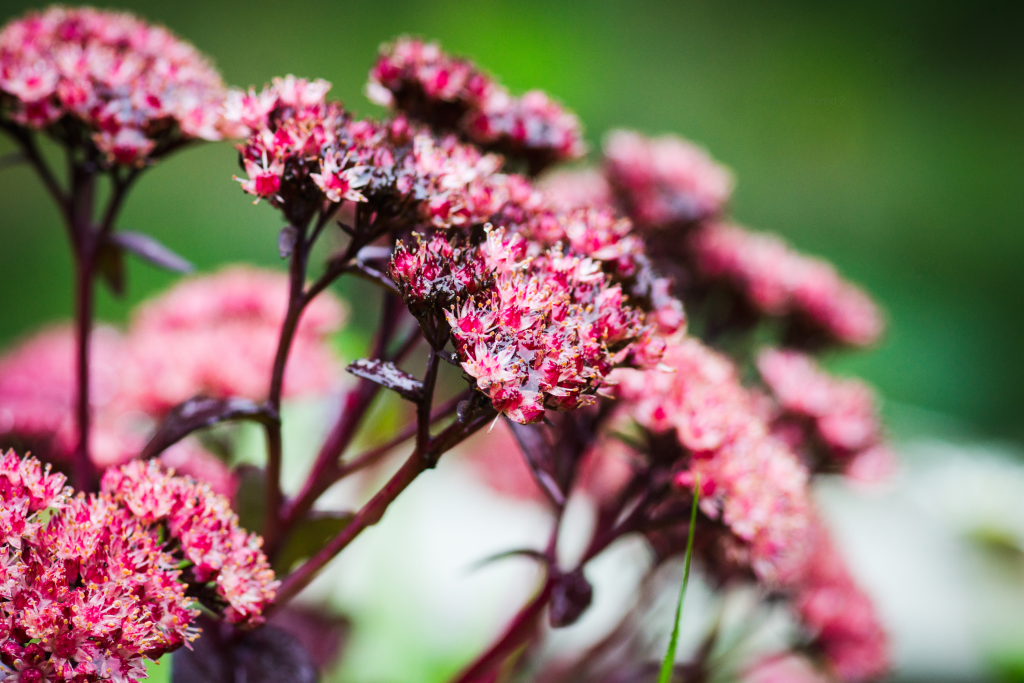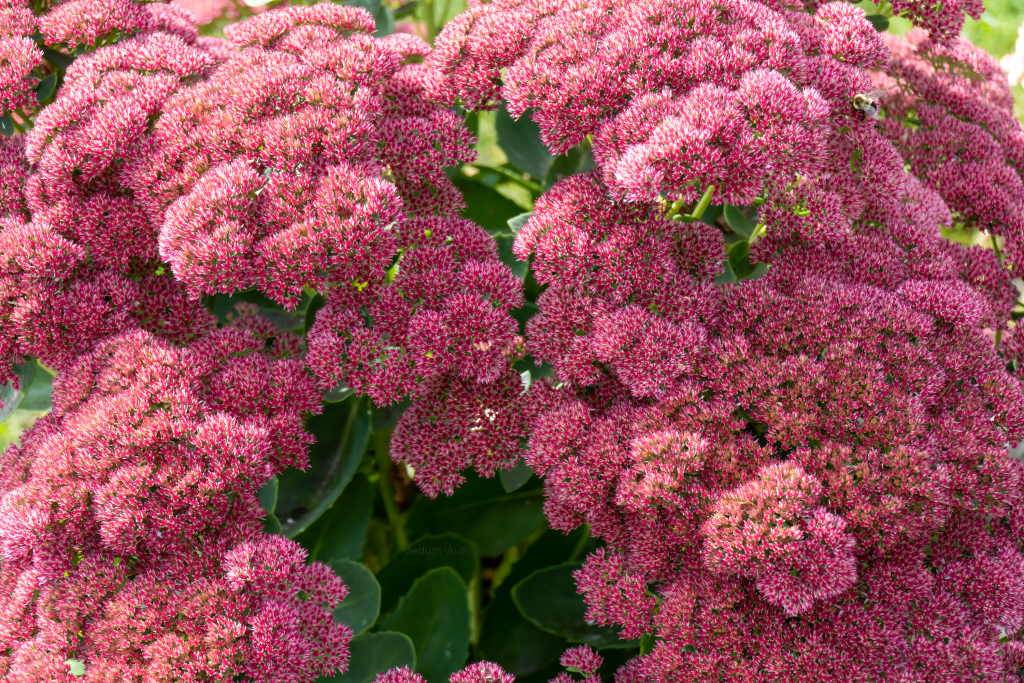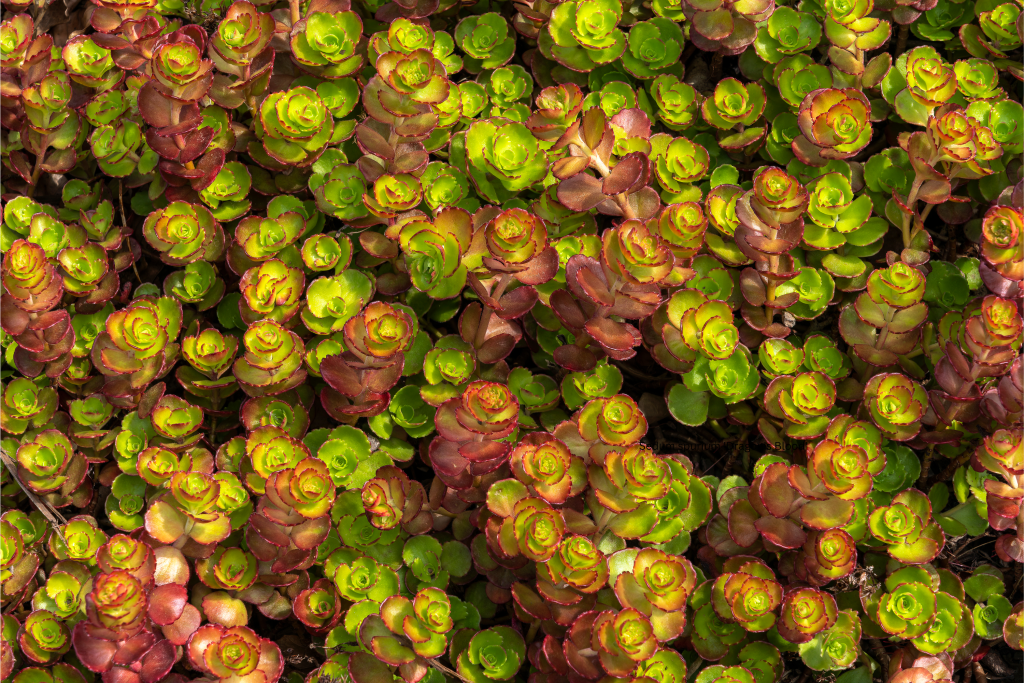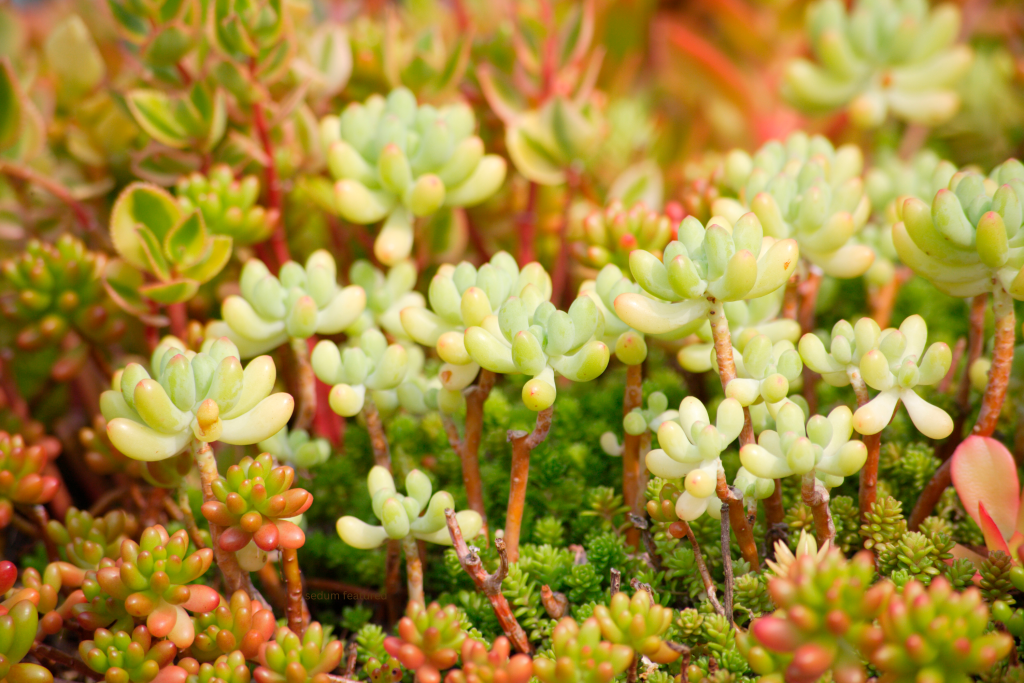Introduction
Sedum, commonly known as stonecrop, is a fascinating and diverse genus of flowering plants belonging to the Crassulaceae family. With over 400 species, Sedum plants are celebrated for their unique appearance, adaptability, and low maintenance. This guide will provide you with all the information you need to successfully grow and care for Sedum plants, whether you’re a seasoned gardener or just starting out.

Characteristics of Sedum
1. Diverse Forms and Sizes
Sedums are incredibly versatile, ranging from low-growing ground covers to upright varieties that can reach up to two feet in height. This diversity makes them suitable for various garden styles, including rock gardens, borders, and containers.
2. Distinctive Leaves
One of the most notable features of Sedum plants is their succulent leaves, which are thick and fleshy. These leaves are designed to store water, allowing the plants to survive in dry conditions. Depending on the species, Sedum leaves can be green, blue, purple, or variegated.
Colorful Blooms
Sedum plants produce clusters of small, star-shaped flowers that bloom in late summer to fall. The flowers come in a variety of colors, including white, yellow, pink, and red, adding a splash of color to the garden during the latter part of the growing season.
Benefits of Growing Sedum
1. Drought Tolerance
Thanks to their succulent nature, Sedums are incredibly drought-tolerant. This makes them an excellent choice for xeriscaping, rock gardens, and any area where water conservation is important.
2. Low Maintenance
Sedums are some of the easiest plants to grow and care for. They require minimal watering, fertilization, and pruning, making them perfect for busy gardeners or those new to gardening.
3. Attracts Pollinators
The flowers of Sedum plants are a magnet for pollinators such as bees and butterflies. Planting Sedum can help support local pollinator populations and enhance the biodiversity of your garden.
4. Erosion Control
Ground-covering Sedum varieties are excellent for erosion control. Their dense, spreading habit helps stabilize the soil on slopes and embankments, preventing erosion and soil loss.
Popular Sedum Varieties
1. Sedum ‘Autumn Joy’

This popular upright variety is known for its large, broccoli-like flower heads that change color from pink to copper as they mature. ‘Autumn Joy’ adds height and texture to garden beds and borders.
2. Sedum spurium ‘Dragon’s Blood’

A low-growing ground cover, ‘Dragon’s Blood’ features reddish-purple leaves and deep red flowers. It’s perfect for adding vibrant color to rock gardens and borders.
3. Sedum morganianum (Burro’s Tail)

This trailing variety, also known as Burro’s Tail, has long, hanging stems covered in blue-green leaves. It’s ideal for hanging baskets and containers, where its unique form can be showcased.
Tips for Growing Sedum
1. Planting
Sedums prefer well-drained soil and full sun, although they can tolerate partial shade. Plant them in the spring or fall, spacing them according to their growth habit to prevent overcrowding.
2. Watering
Water newly planted Sedums regularly until they are established. Once established, they are drought-tolerant and only need occasional watering. Avoid overwatering, as this can lead to root rot.
3. Soil and Fertilization
Sedums thrive in well-drained soil. They do not require rich soil or frequent fertilization. A light application of a balanced fertilizer in the spring is sufficient.
4. Pruning and Maintenance
Prune Sedum plants in the spring to remove any dead or damaged growth and to encourage a more compact shape. Deadhead spent flowers to promote continuous blooming.
5. Propagation
Sedums are easy to propagate. Take stem or leaf cuttings, let them dry out for a day or two, and then plant them in well-drained soil. They will quickly root and grow into new plants.
Conclusion

Sedum plants are a wonderful addition to any garden, offering a combination of beauty, resilience, and ease of care. Their diverse forms, colorful blooms, and ability to thrive in challenging conditions make them a gardener’s delight. Whether you’re looking to cover a sunny slope, fill a container, or attract pollinators, there’s a Sedum variety that will meet your needs.



